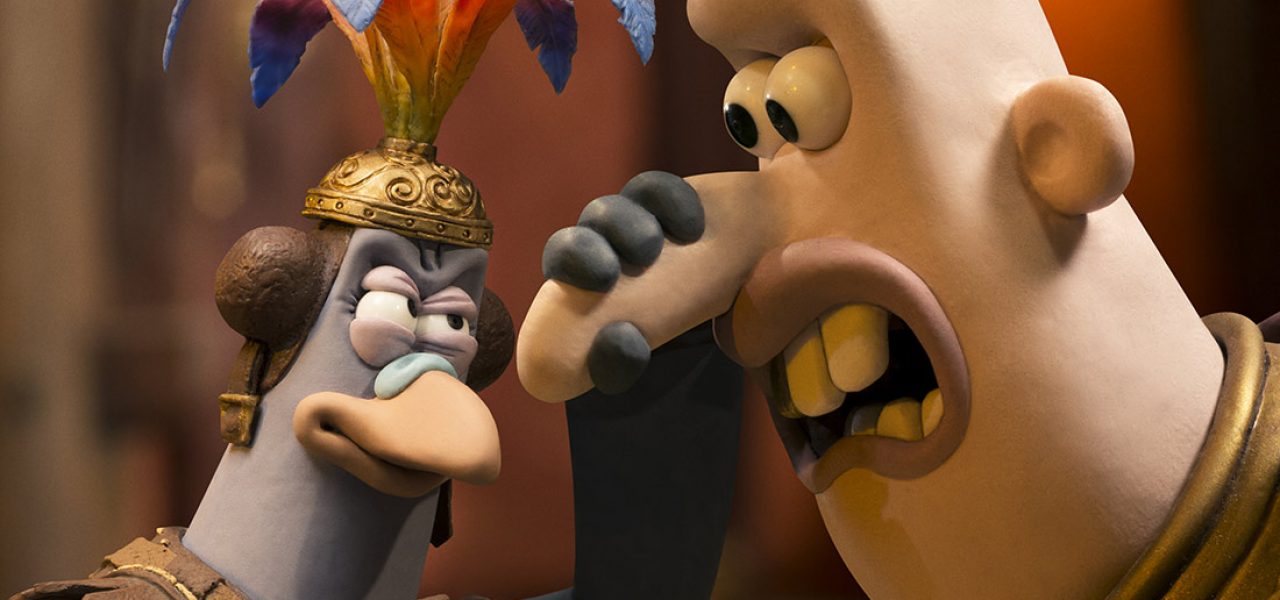
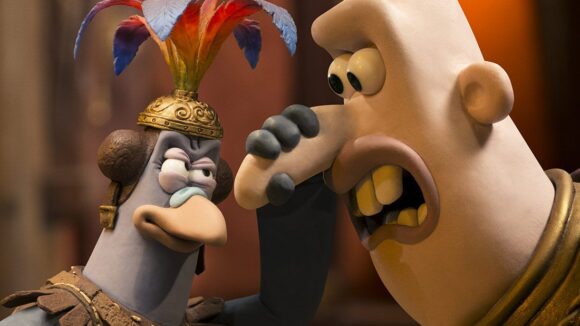
INTERVIEW: Nick Park On The Earthy Humor And Art Of ‘Early Man’
British stop-motion icon Nick Park has returned to the big screen after 13 years, this time with Early Man, his first feature project as a solo director.
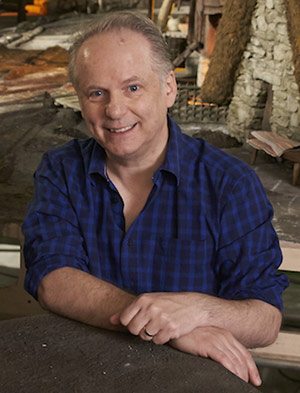
For this latest caper, the Wallace and Gromit creator turns his attention to an imagined origin for the world’s favorite sport, soccer…erm…football. When the Bronze Age comes knocking, a ragtag group of cavemen headed up by Dug (voiced by Eddie Redmayne) are forced to take on the professional footballers of Real Bronzio in order to save their idyllic homeland from Tom Hiddleston’s greedy Lord Nooth.
Park, who’s been playing with the idea for a caveman comedy for years and years, credits Ray Harryhausen as a major influence for the world of Early Man. “When I was 11, my favorite movie was One Million Years B.C. I was a big dinosaur fanatic and couldn’t believe I was seeing dinosaurs moving [next to] people [onscreen],” the director told Cartoon Brew last week.
In fact, Early Man’s opening, in which a T. rex and Triceratops tussle mere steps away from Dug’s Neo-Pleistocene ancestors, is a direct tribute to the Harryhausen film. To achieve a real semblance, Park’s team even imitated the grainy film of Harryhausen’s 1966 classic.
The pre-historic turf may be new to Park, but instantly recognizable, of course, is the signature look of Aardman Animations’ charmingly goofy Plasticine characters. Dug’s wide smile is closely reminiscent of Wallace’s toothy grin, while his boar BFF Hognob serves much the same visual and comedic purpose as Gromit (though with significantly less attitude).
Park isn’t likely to veer away from clay animation any time soon, as he finds that his chosen medium complements his filmmaking style, and this film in particular, perfectly. “I feel like [the clay] suits the earthiness of it, and the hairiness, and the humor,” he explains. “It’s almost that the naïveté of clay and the figures helps the humor and the physicalness of it. I find that attractive.”
The end result may be a whimsical romp on the silver screen, but it’s no walk in the park getting to that point. Altogether, 273 puppets were created by 23 artists over a period of 30 months, and a total of 3,000 unique mouths were constructed for the clay cast. At the height of production, there were 33 animators working simultaneously on different sets.
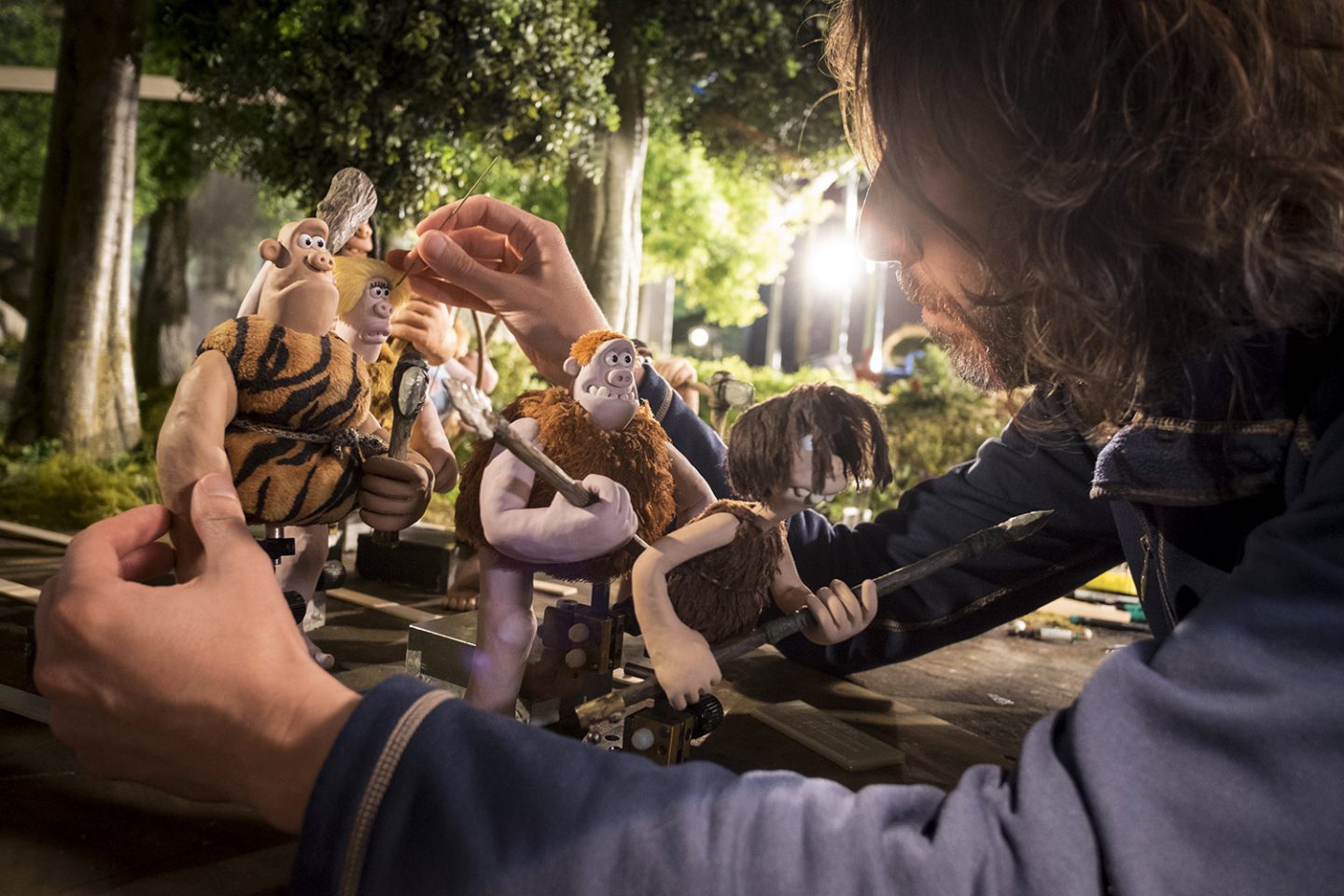
Of course, the stop-motion animators and model makers were offered reprieve in the form of digital assistance. Park was particularly concerned about the climactic scene, the soccer match that determines the fate of Dug and his caveman crew, for which he wanted to create “big, sweeping action and excitement” à la Gladiator.
“The idea of doing it in stop-frame worried me, in case it didn’t work,” Park admits. “The football pitch itself had to be three times the size of this [225-square foot] room, just for scale, so we couldn’t reach puppets at the back. Anyone at the back and out of focus was digital, and the crowd itself went digital as well.” (U.K.-based Axis VFX worked on 1,350 vfx and compositing shots on the film, including 20-minutes’ worth of stadium sequences, as well as contributing lava, fire, and water effects.)
Park nevertheless tried to put a limit on how much digital enhancement he would allow on the character animation. “We had a policy that we would keep everything as stop-frame as possible, and it can even look a little dated,” he says. “For example, a lot of stop-frame animators would shy away from fur, like on Hognob, and [Dug’s] scraggly hair, because you tend to nudge the hair or put it out of place and it twitches. For me, I was actually encouraging that, [and] fingerprints on the clay.”
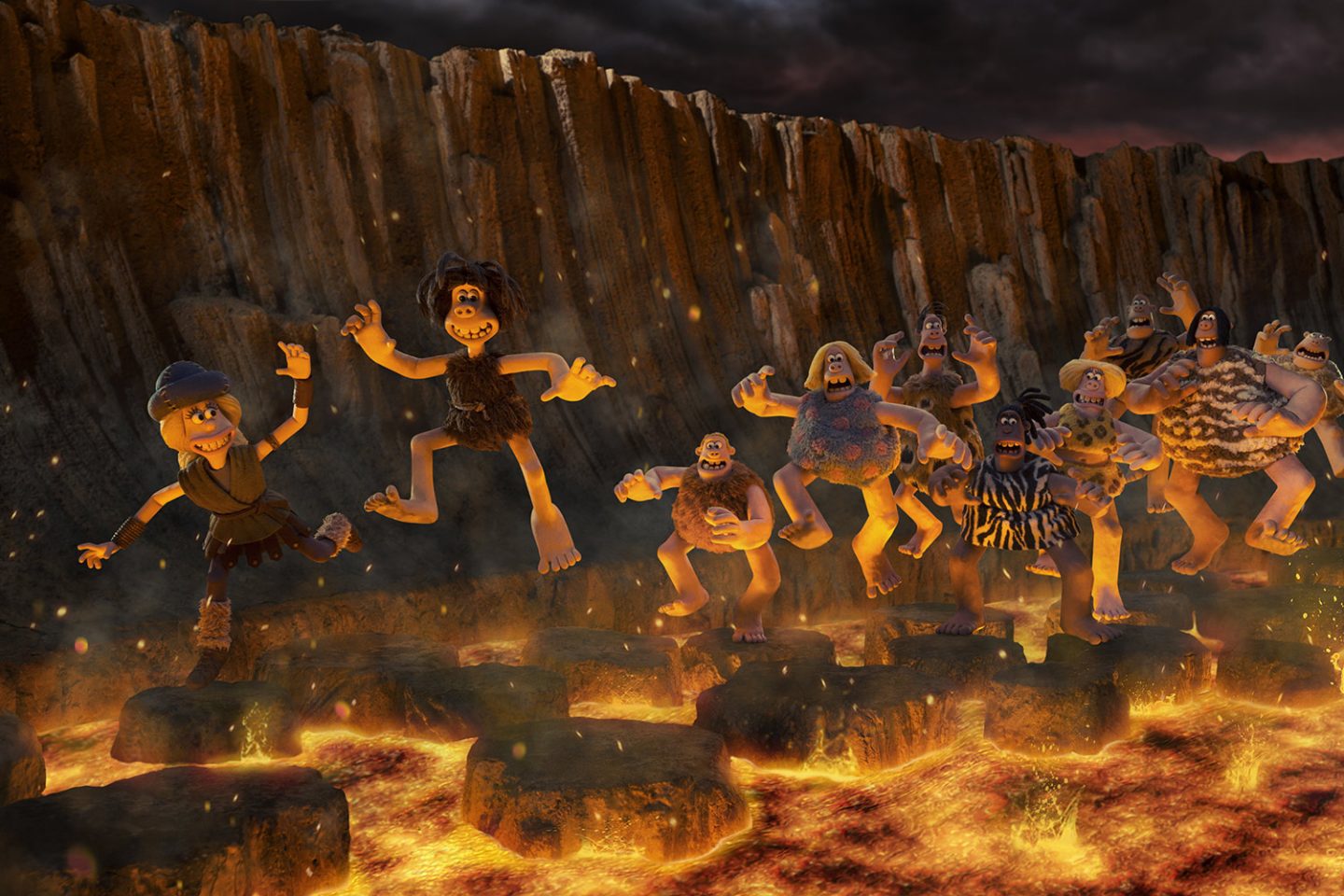
True to his word, animators’ fingerprints on the puppets’ clothes or bodies are often on display in Early Man, magnified many times over. While the clean and polished animation afforded by technological advances, years of experience, and production scope clearly distinguishes this film from Park’s early forays into stop-motion, there remains a similar rustic appeal.
“I know you can do such wonderful fur and hair with cg, but I wanted it a little bit the opposite of that, really, for its charm. For example, even the giant duck, you could easily do that cg, I’m sure, and it would look great,” says Park of a standout gag involving a waterfowl of epic proportions. “But I wanted a sort of Frankenstein-type, bad taxidermy duck, so it looks more horrific, and more funny.”
As with most of Park’s productions, nearly every other frame features some form of joke or pun. A film made with Plasticine set in the Neo-Pleistocene isn’t accidental.
For a director of a movie supposedly about soccer, it seems Park would much rather talk about giant ducks than the sport itself. “I’ve never been a football fan,” he reveals after a chuckle, and then says, somewhat paradoxically, “But I’ve always loved the game. I’ve always loved the World Cup and get very excited about it. I felt like I can tell a story as an outsider, so it’s a story not for football fans, really.”

Park says he was interested in what he unironically calls the “tribal aspect” of soccer, and how that made it the perfect sport for a story about cavemen. “It’s to do with being from the U.K., where soccer is particularly like a religion; it always has been. And in Europe, it’s very much — and South America, I guess — it’s very much a religion,” he muses.
And though he considers the comedy of Early Man to have something for everyone, Park made sure to include enough nods to soccer culture to appease the sports crowd. During the final match, for instance, Real Bronzio star Jurgend winks cheekily at Lord Nooth in a direct reference to Cristiano Ronaldo’s infamous wink at the 2006 World Cup after he ensured a red card for opponent Wayne Rooney.
“But I think humor, most slapstick humor, is very universal,” Park emphasizes. “I think we just went by our instincts, really. [We’ve] never made Wallace and Gromit films to appeal to anyone except ourselves, and they seem to have a universal appeal. I think if you’re true to yourself then it will have a universality to it, that’s my belief.”

.png)